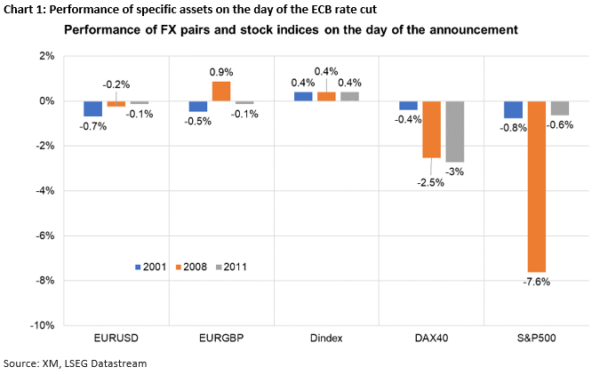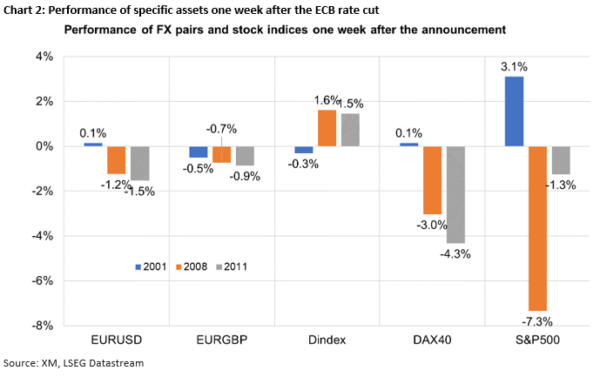- ECB prepares to cut rates for the first time ahead of the Fed
- History points to strong possibility of back-to-back rate cuts
- Both the euro and German DAX tend to underperform on meeting day
The ECB is on the brink of announcing its first rate cut since March 2016 as the overall rhetoric from ECB officials leaves little doubt about next week’s rate decision, with even the most hawkish members of the Governing council acknowledging the need for rate cuts. This will be the ECB’s first step to gradually unwind the aggressive tightening recorded during the 2022-2023 monetary policy cycle.
ECB to cut ahead of the Fed
If the ECB confirms expectations, next Thursday’s rate cut will mark the first time that the ECB will ease its monetary policy stance ahead of the Fed. Up to now, the Fed has always been dictating the start, the end, and the pace of any monetary policy cycle. However, with US inflation remaining quite sticky on the back of potent consumer spending, and the US Presidential elections being around the corner, Fed members’ hands are currently tied.
Table 1 below presents the initial rate cuts announced by the ECB during its three monetary policy easing cycles since 2000 along with the Fed’s stance at that time.
Back-to-back rate cuts?
Despite some positive news on the economic front from the recent PMI surveys, numerous ECB members appear supportive of another rate cut at the July meeting. Such an outcome will be closely examined in the behind-the-door discussions during the June meeting, with any likely decisions clearly contingent on the quarterly inflation projections presented by the ECB staff.
Interestingly, the ECB has, in the past, selected to ease in successive meetings. More specifically, in 2008, four consecutive rate cuts were announced, while in the 2011 easing cycle the ECB cut rates in two straight meetings before pausing to evaluate the situation.
Performance on the day of the rate cut announcement
Most ECB rate cuts are usually implied or even pre-announced in order to prepare the market and avoid an acute reaction. This time around, ECB members have been crystal clear about the outcome of next week’s gathering, allowing the market to run ahead of itself and to start pricing in a plethora of rate cuts in 2024 and 2025.
Despite the strong expectations, there is usually a market reaction on the day of the rate cut announcement. As seen in Chart 1 below, in the three respective dates presented earlier, euro/dollar tends to sell off by 0.1-0.7% as the market always tries to price a series of rate cuts, helping the dollar index rally in these three occasions. This euro underperformance can also be seen in the euro/pound pair.
Interestingly, the DAX 40 index exhibits a tendency to finish the rate cut announcement day significantly in the red, although these negative moves could be caused by the underperformance recorded in the S&P 500 index.
Market performance one week after the first rate cut
Chart 2 below shows the performance of specific FX pairs and stock indices one week after the first ECB rate cut is announced. The euro tends to remain under pressure, especially against the pound but less against the dollar. Similarly, the DAX 40 index shows a tendency for stronger losses as the market digests the new ECB outlook and prepares for the next rate cuts.















